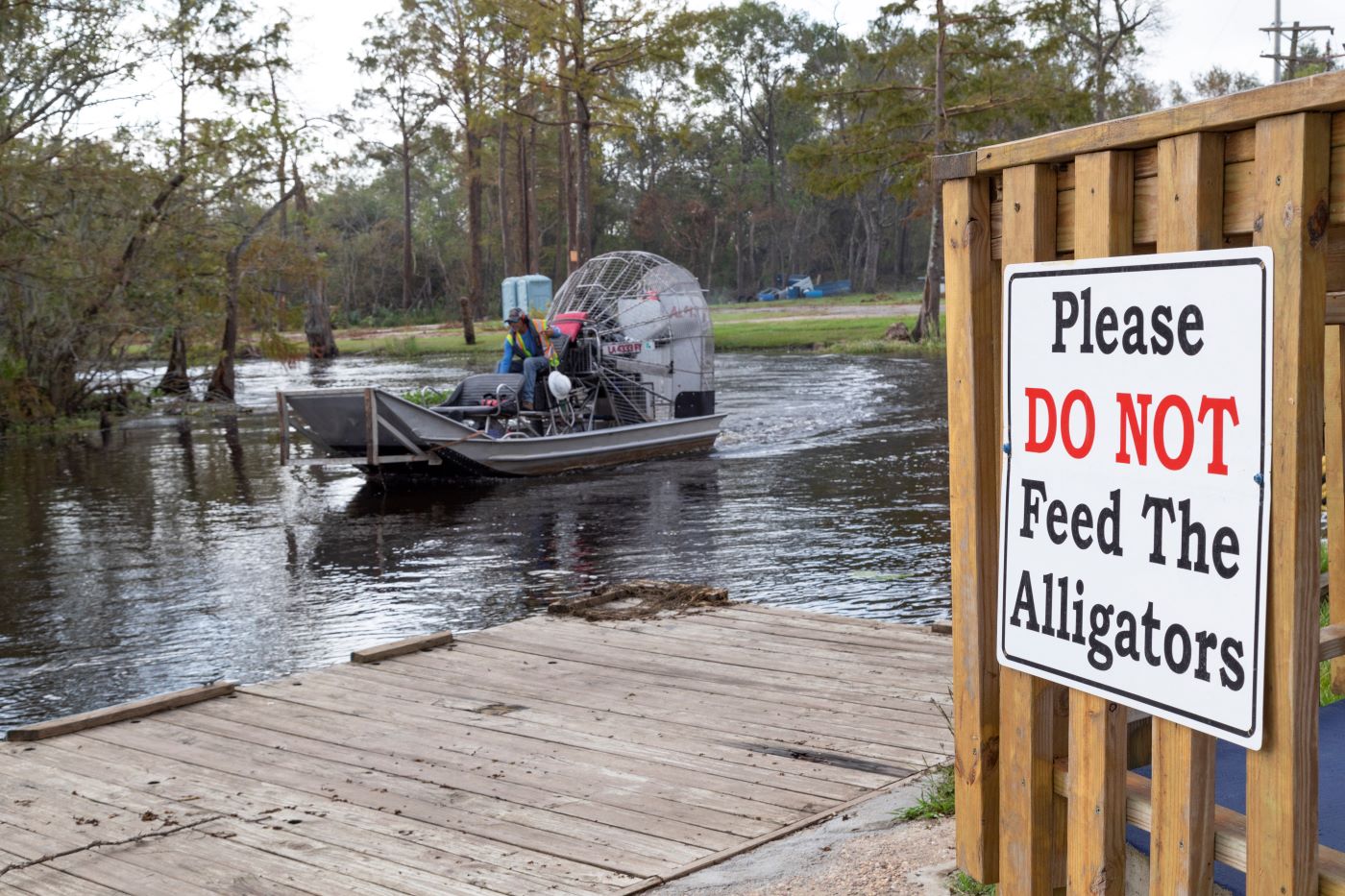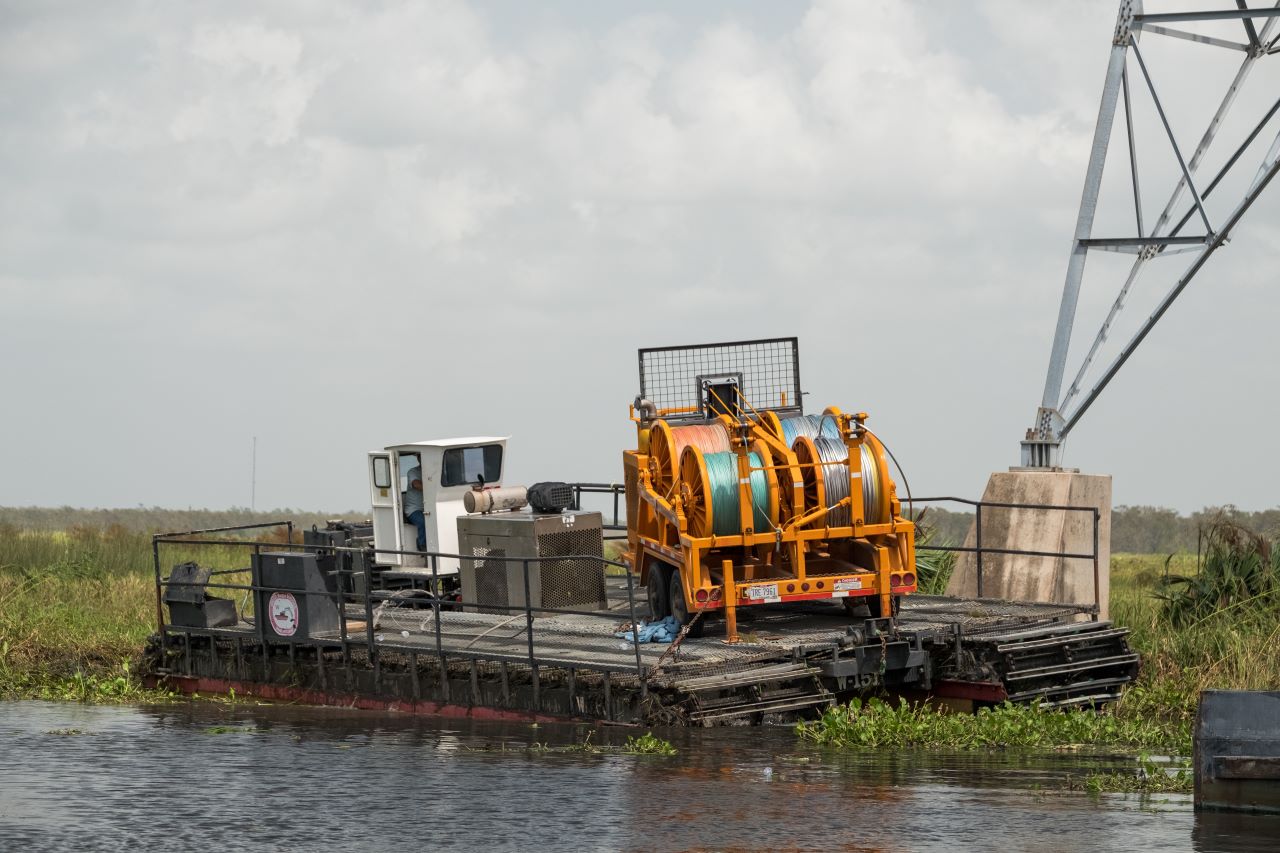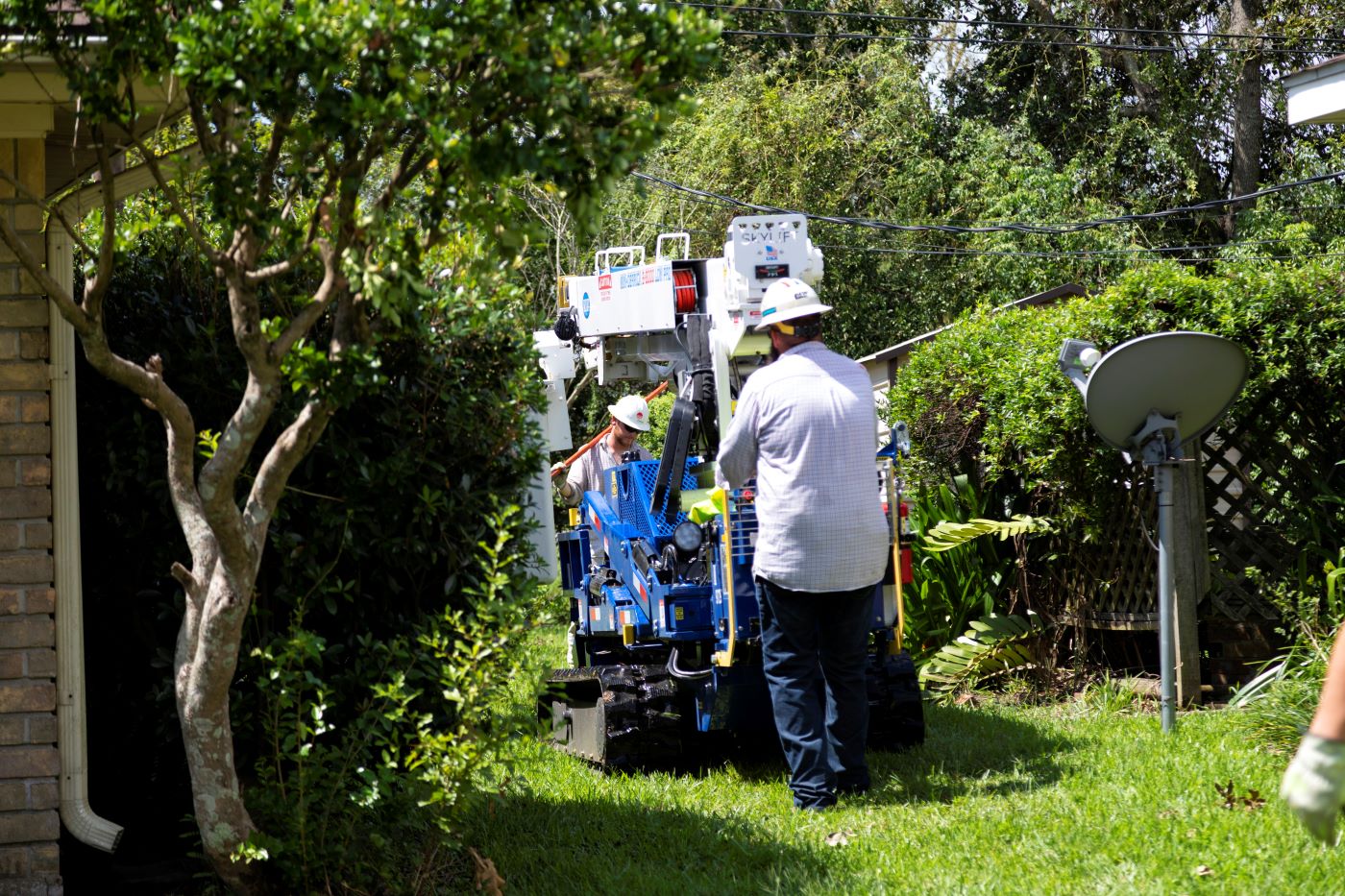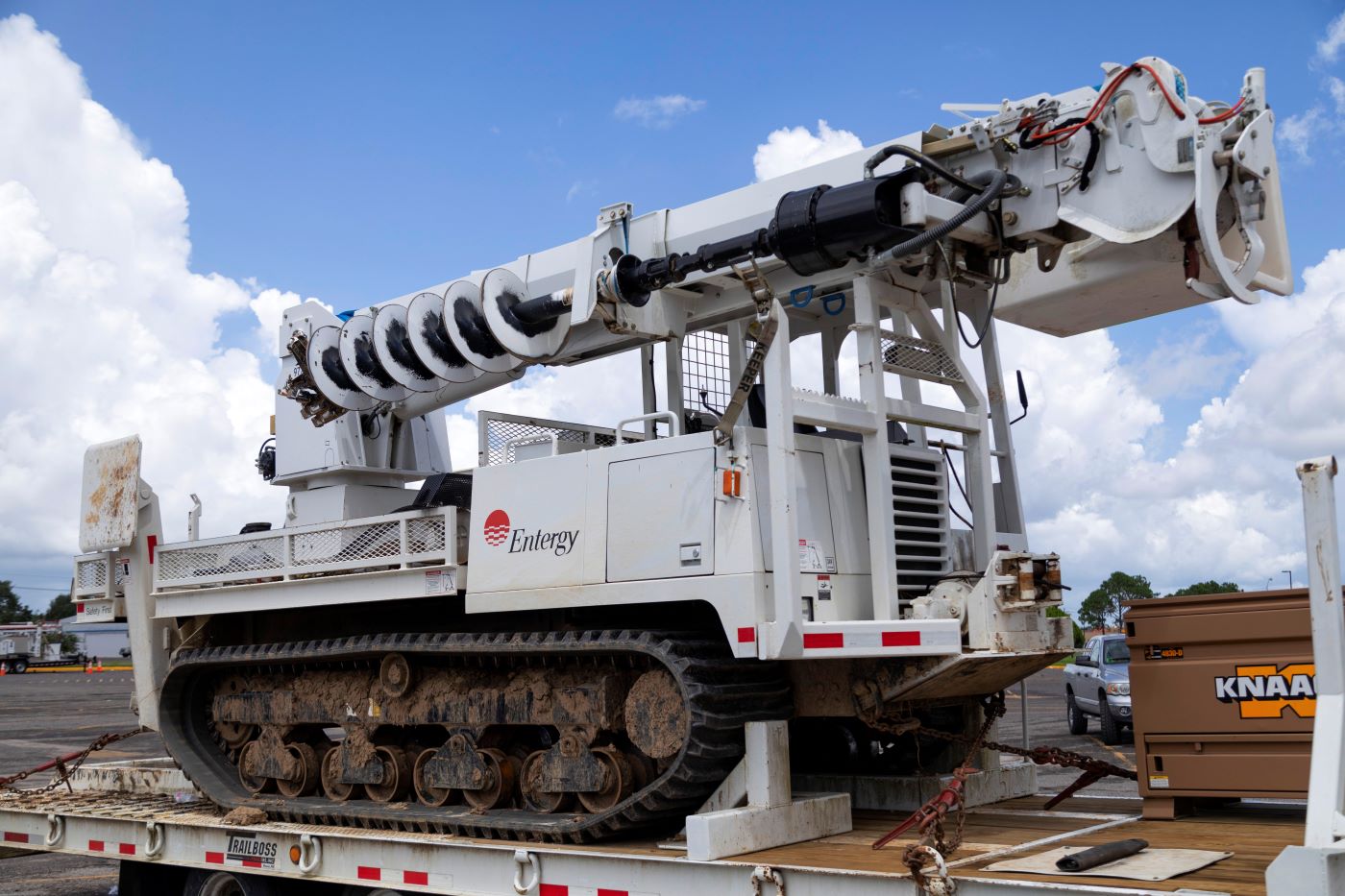Insights > Powering Through: Neither Swamps, Rivers, Woods nor Backyards Stop Crews from Getting the Job Done
Powering Through: Neither Swamps, Rivers, Woods nor Backyards Stop Crews from Getting the Job Done
09/04/2020

When a major transmission line linking Texas and Louisiana went down in the Sabine River as Hurricane Laura rumbled through the region, it took out power to thousands, destroyed numerous structures on the line and impeded river traffic.
You just can’t send a bucket truck out to fix that.
More than 23,200 restoration workers from 29 states were activated to bring power back to the hundreds of thousands of Entergy customers in Texas and Louisiana who lost it. So you’re bound to find them and their equipment in not only bucket trucks but also in some rather unconventional contraptions.
Come Hell or High Water
“High-water vehicles, drones, helicopters, airboats, even barges—these were all procured to help us in our restoration efforts,” said Todd Gallagher, Entergy Texas senior transmission grid manager. “No matter what terrain we encounter, crews will be ready to restore power as quickly as they safely can.”
In the case of the downed transmission line, workers needed to get it out of the river and back up on the towers. But the towers are in marsh on either side of the river. To access them, restoration workers used barges to move equipment, including bucket trucks, to the site. Airboats navigated the swampy waters to bring crews to the sites. While on them, workers must watch for dangers. Animals, like snakes and alligators, are all hazards of the job. Flat deck pontoon marsh buggies hauled some equipment, like four-drum rope pullers, to the remote, marshy work sites as well.
 TruckonBarge.jpg)

Sometimes the work is far less remote, but still presents challenges. Such was the case in a hard-hit Port Arthur, Texas, neighborhood where power lines run behind houses and through backyards. In such cases, there’s often not enough room for a bucket truck or if there is, the truck would tear up a customer’s yard. In such instances, crews may use a small derrick to access the space.
“Mini-derricks go in all types of terrain, tight spaces, backyards--any place our big trucks can’t,” said Randy Vaughan, Entergy Mississippi senior manager of engineering. “Ours have buckets on them, which help keep linemen from having to climb poles.”
If for some reason a mini-derrick won’t work in an area, the linemen must climb the poles, wearing fall protection, to make needed repairs.

Difficult, demanding and dangerous
“No storm or restoration is ever routine. They are all different in their own way,” said John Hawkins, Entergy Louisiana vice president of distribution operations. “But this effort is uniquely challenging. We have to safely restore power to hundreds of thousands of customers across variable terrain after a Category 4 hurricane while following extra safety precautions due to a pandemic.
“I don’t know that we’ll ever face anything this difficult and dangerous again!”
From swamps to woods to rivers to backyards, Entergy crews, contractors and mutual-aid workers are ready with the skills, the tools and the means to tackle the difficult, demanding and dangerous job ahead.



